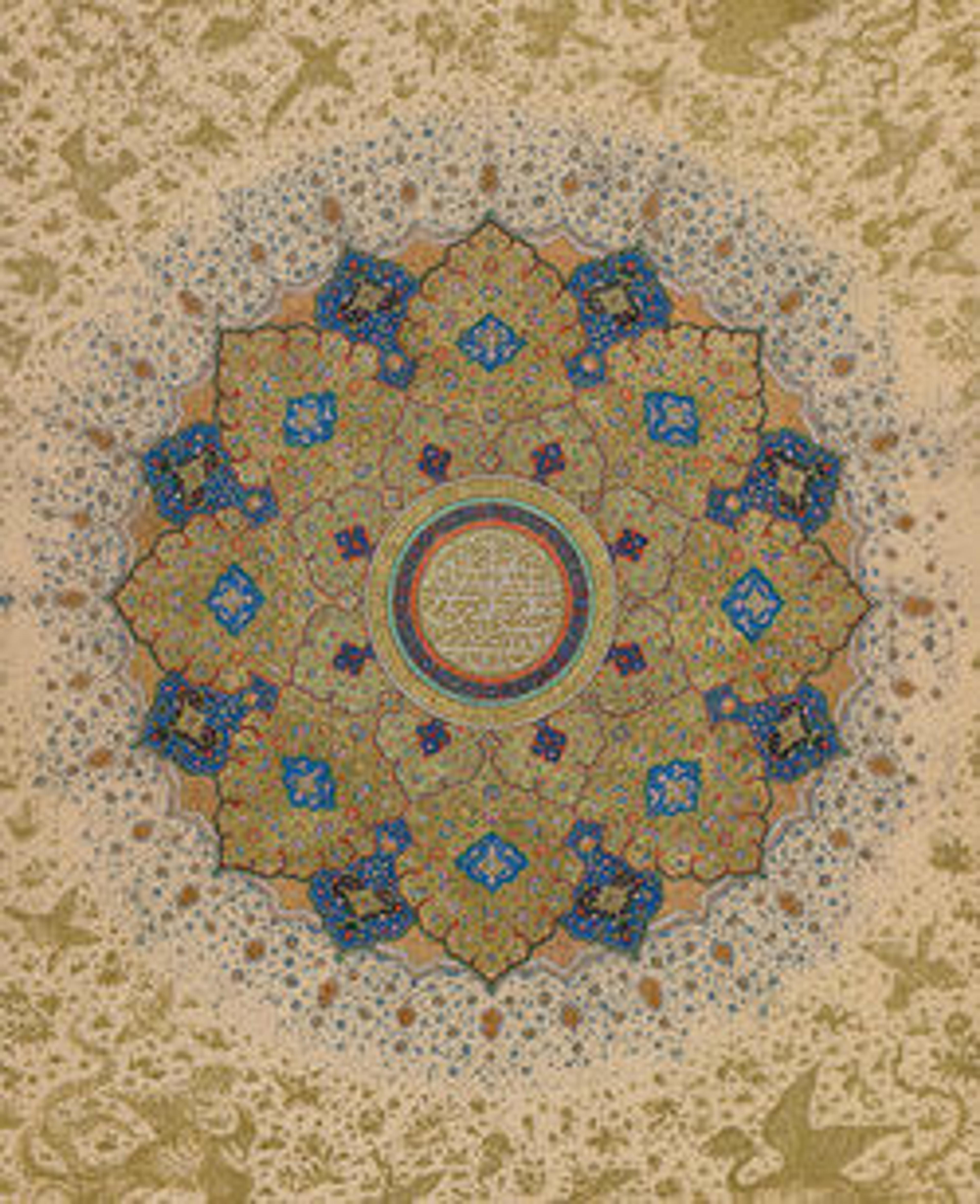Textile Fragment
This fragment depicts a rare small-scale version of the design known as chintamani ("auspicious jewel"), which finds its etymology in Sanskrit and usually features three circles or closed crescent forms representing pearls. Also associated with the patterning on animal skins, the circular elements are alternately referenced as leopard spots, and often accompanied by wavy lines representing tiger stripes. In this fine example of seraser, the gold ground of the cloth is accomplished by weft threads comprised of thin strips of silver foil wrapped around a yellow silk core, giving the surface of the cloth its luster.
Artwork Details
- Title: Textile Fragment
- Date: early 16th century
- Geography: Attributed to Turkey, probably Istanbul
- Medium: Silk, metal wrapped thread; taqueté (seraser)
- Dimensions: Textile: H. 14 1/2 in. (36.8 cm)
W. 6 3/8 in. (16.2 cm)
Mount: H. 21 1/4 in. (54 cm)
W. 16 3/4 in. (42.5 cm)
D. 1 3/16 in. (3 cm) - Classification: Textiles-Woven
- Credit Line: Rogers Fund, 1915
- Object Number: 15.125.7
- Curatorial Department: Islamic Art
More Artwork
Research Resources
The Met provides unparalleled resources for research and welcomes an international community of students and scholars. The Met's Open Access API is where creators and researchers can connect to the The Met collection. Open Access data and public domain images are available for unrestricted commercial and noncommercial use without permission or fee.
To request images under copyright and other restrictions, please use this Image Request form.
Feedback
We continue to research and examine historical and cultural context for objects in The Met collection. If you have comments or questions about this object record, please complete and submit this form. The Museum looks forward to receiving your comments.
